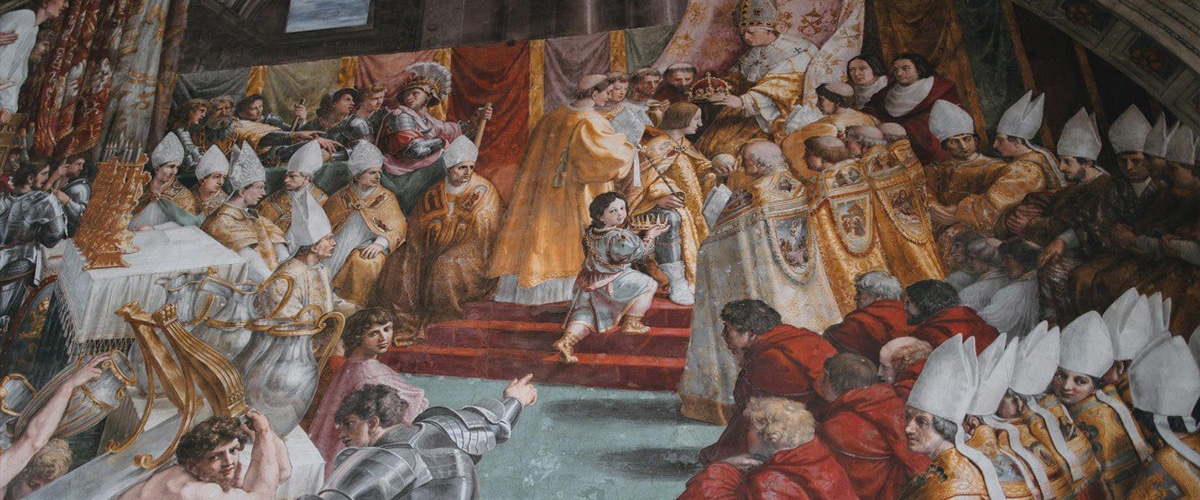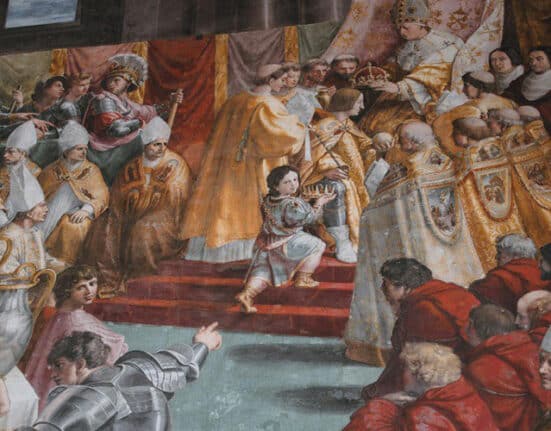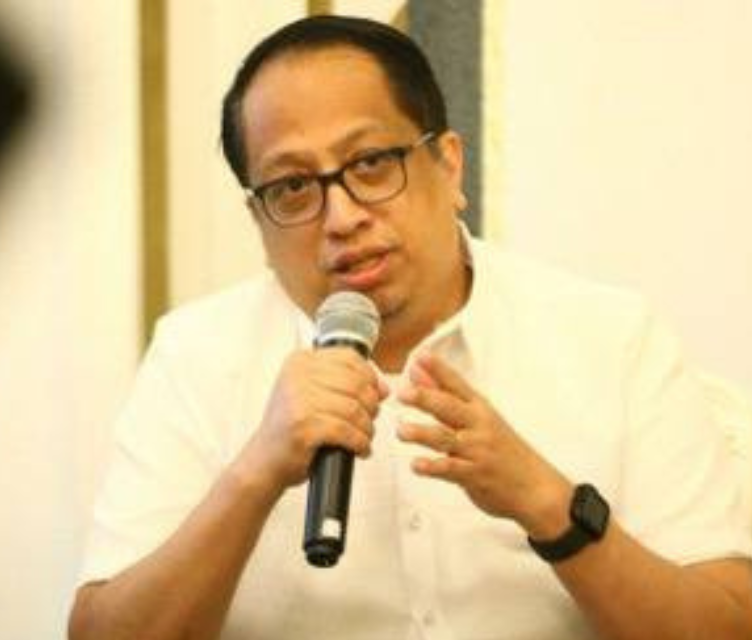SMOKE has not yet risen, but in the days that will follow, something inside the Sistine Chapel will begin to burn.
No, not fire in the literal sense—rather, it’s the weight of centuries of history, the tangled threads of power, and the murmurs of prophecy that will soon fuel a decision behind those frescoed walls.
The cardinals gather, but they are not merely here to elect a new pope; they are here to navigate the delicate balance between faith, politics, and an institution with a long history of scandals, secrets, and intrigue.
Conclaves are sacred. But beneath the solemn vows, history whispers of kings who interfered, factions that clashed, and popes tainted by scandal. Moments when politics, ambition, and faith blurred in the quiet secrecy of the Vatican.
As the world watches, awaiting the selection of a new leader to guide billions of Catholics, we turn back to the untold stories, hidden secrets, whispered scandals, and the haunting prophecy that has lingered in the Church’s history, shaping its past and possibly casting a shadow on its future.
Scandal in Cloth
Though popes are often seen as moral compasses, history tells a murkier tale. As early as the 10th century, some pontiffs wore the cloth with stained hands—embroiled in corruption, political intrigue, and even outright debauchery.
One of the most infamous Pope was Benedetto Caetani, or more popularly known as Pope Boniface VIII.
According to historical records, Pope Boniface VIII was a troublemaker. He was known due to his conflicts with secular rulers, particularly King Philip IV of France, and his extreme assertion of papal authority.
The Italian Renaissance poet Dante Alighieri was one of the pope’s fiercest critics—so much so that Boniface and his allies orchestrated Dante’s exile from Florence.
This act earned the pope a spot on Alighieri’s Inferno in Divine Comedy in the eight circle of hell.
Another controversial pope was the Spanish Rodrigo Borgia or Pope Alexander VI. Borgia was so notoriously corrupt that his surname became synonymous with scandal. He allegedly bought the papacy through bribery of his fellow electors.
He was also a propagator of nepotism, putting many of his relatives in positions of power. And as if that wasn’t enough to appall you, Borgia was also known for killing off rival cardinals to take their properties for himself. He also had several mistresses and children born out of wedlock.
Another eccentric and controversial figure was Pope Stephen VI, whose infamous Cadaver Synod remains one of the most bizarre moments in papal history—even by today’s standards.
In a grotesque display of power, Stephen had the corpse of his predecessor, Pope Formosus, exhumed, dressed in papal robes, and put on trial. The dead pope was found guilty (uh, duh?), stripped of his title, and thrown into the Tiber River—a spectacle that shocked even medieval Rome.
Needless to say that the cadaver trial backfired. Public outrage erupted, and within months, Stephen VI was imprisoned and later strangled in his cell.
The Cadaver Synod became a dark symbol of how power struggles and personal vendettas once twisted the Church’s highest office into theater.
Contemporary Controversies
Controversies in the Catholic Church didn’t end with the medieval and Renaissance periods. While earlier popes were embroiled in power struggles, corruption, and scandalous behavior, contemporary pontiffs have faced their own set of challenges and criticism—often due to the modern world’s changing social and political dynamics.
Pope John Paul II, beloved for his role in dismantling communism and shaping the Church’s modern image, nevertheless carried a controversial legacy, especially in how he handled the growing sexual abuse crisis.
Though he made some efforts to address the issue, critics argue that his papacy was marked by inaction or protection of abusers, most notably Marcial Maciel, the founder of the Legionaries of Christ.
Despite multiple allegations of abuse, Maciel was allowed to continue his ministry until after John Paul’s death. The failure to act decisively on these matters remains a major blemish on his papacy, as more victims came forward after his death, revealing the depth of the Church’s failure to hold clergy accountable.
On the other hand, John Paul’s successor, Pope Benedict XVI, was also hounded by the same criticisms. He became the first pope in nearly 600 years to resign.
Although his decision was widely believed to be attributed to health reasons, many still believed that Pope Benedict XVI faced internal pressures about the inherited sexual scandal problems of the church.
The pope tried to assuage the controversy. He met with the victims of the clergy’s sexual abuses but was still criticized for failing to adequately tackle the systemic nature of the problem.
His resignation, at the height of these issues, led to speculation that he could no longer bear the weight of the scandal that had tarnished the Church.
Pope Francis’s election in 2013 brought hope to many as a progressive reformer. His stances on social issues like LGBTQ+ rights, climate change, and economic justice set him apart from his predecessors.
However, his papacy has been divisive. Conservative factions within the Church have strongly resisted his liberal views, especially regarding LGBTQ+ inclusion, divorce and remarriage, and gender roles.
His efforts to address corruption and financial mismanagement within the Vatican have also faced resistance, with entrenched interests fighting against his reforms.
Back to the Conclave: The Malachy Prophecy
The conclave is set to begin, and behind the walls of the Vatican, inside the Sistine Chapel, the cardinals will prepare to select the next pope.
But for some, this event is not simply something that’s happening. It might be the fulfillment of an ancient prophecy, one that promises an end to the papacy as we know it.
The Prophecy of Saint Malachy, a document that has captivated the imaginations of believers and skeptics alike, predicts the papacies of 112 popes, beginning with Pope Celestine II in the 12th century and ending with the final pope, Petrus Romanus—Peter the Roman.
According to the prophecy, this last pope will rule during a time of great tribulation for the Church, leading to the destruction of Rome and the end of the world as foretold in Christian eschatology.
The prophecy suggests that this pope’s reign will be marked by apocalyptic events and that his papacy will signal the final chapter of the Catholic Church.
The prophecy was first published in 1595 by the Benedictine monk Arnold de Wyon, who claimed to have found the list among Malachy’s papers.
According to de Wyon, Malachy had received a vision of future popes during a visit to Rome in 1139. He had reportedly recorded the names or mottos for each pope in a series of brief, symbolic phrases.
For example, the motto for Pope Urban VIII was “Urbanus Cato,” which is said to refer to his family name, Barberini, and his reputation as a reformer.
The phrase for Pope Pius IX, “Crux de Cruce” (Cross from the Cross), is said to reflect his deep devotion to the cross, both literally and symbolically.
But the Vatican and scholars alike dismiss the prophecy as a medieval forgery. They argue that the list of popes was likely created in the 16th century, around the time of the election of Pope Gregory XIV in 1590, to influence the vote and provide a sense of divine legitimacy to the selection of the next pope.
In fact, historians have found discrepancies in the way some of the popes were described, suggesting that the prophecy was a retroactive creation, designed to appear prophetic after the fact.
As such, the prophecy is generally dismissed as an attempt to make sense of historical events after they occurred, rather than a legitimate prediction of future events.
When Conclave Begins
As the conclave unfolds, the imagination of the world is bound to stir.
The grand, tumultuous history of the Catholic Church—its glories, its scandals, its triumphs, and its downfalls—paints a vivid backdrop for this moment of decision.
For some, it’s a divine event, a sacred ritual guided by the hand of God.
For others, it’s a political spectacle, a moment in which power, influence, and control are determined behind closed doors.
Whether you believe the pope’s authority to be divinely ordained or politically constructed, one thing is certain: the decisions made in the coming days will echo through history, leaving their mark on the future of the Church—and the world.
How useful was this post?
Click on a star to rate it!
Average rating 0 / 5. Vote count: 0
No votes so far! Be the first to rate this post.
We are sorry that this post was not useful for you!
Let us improve this post!
Tell us how we can improve this post?





